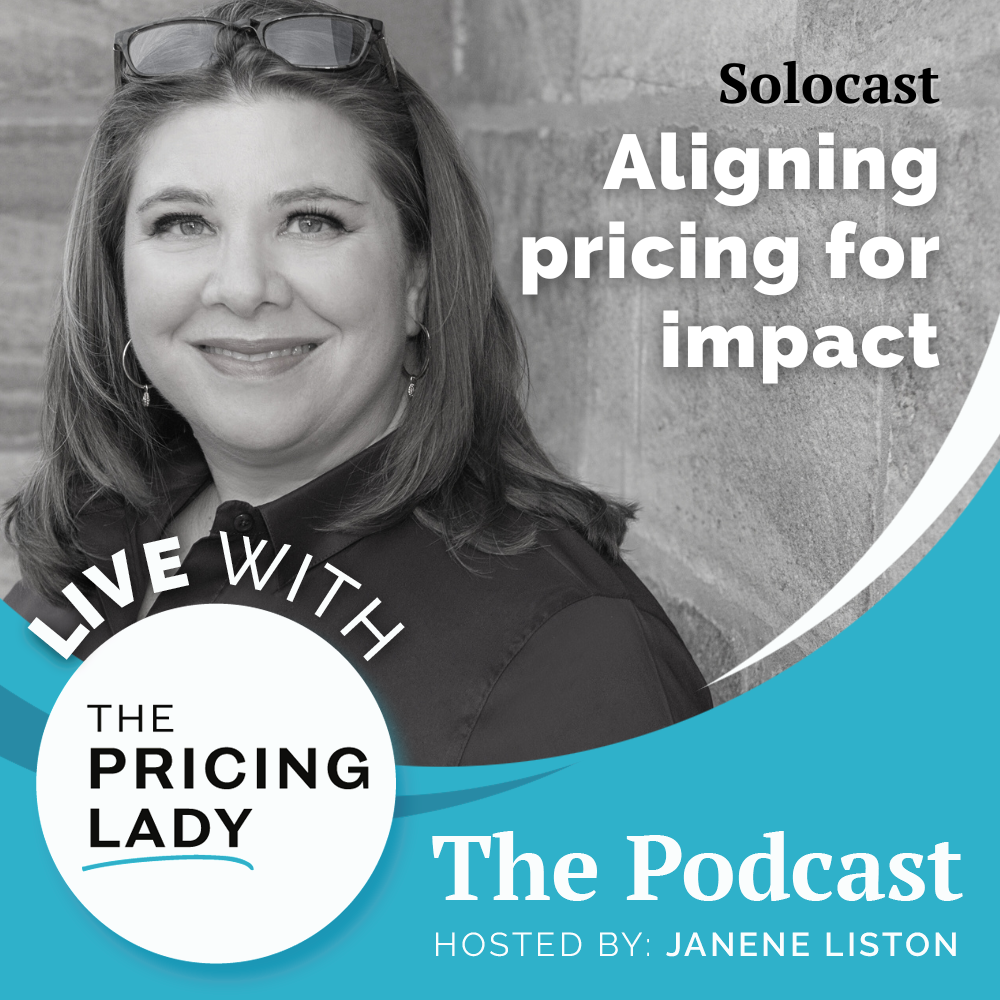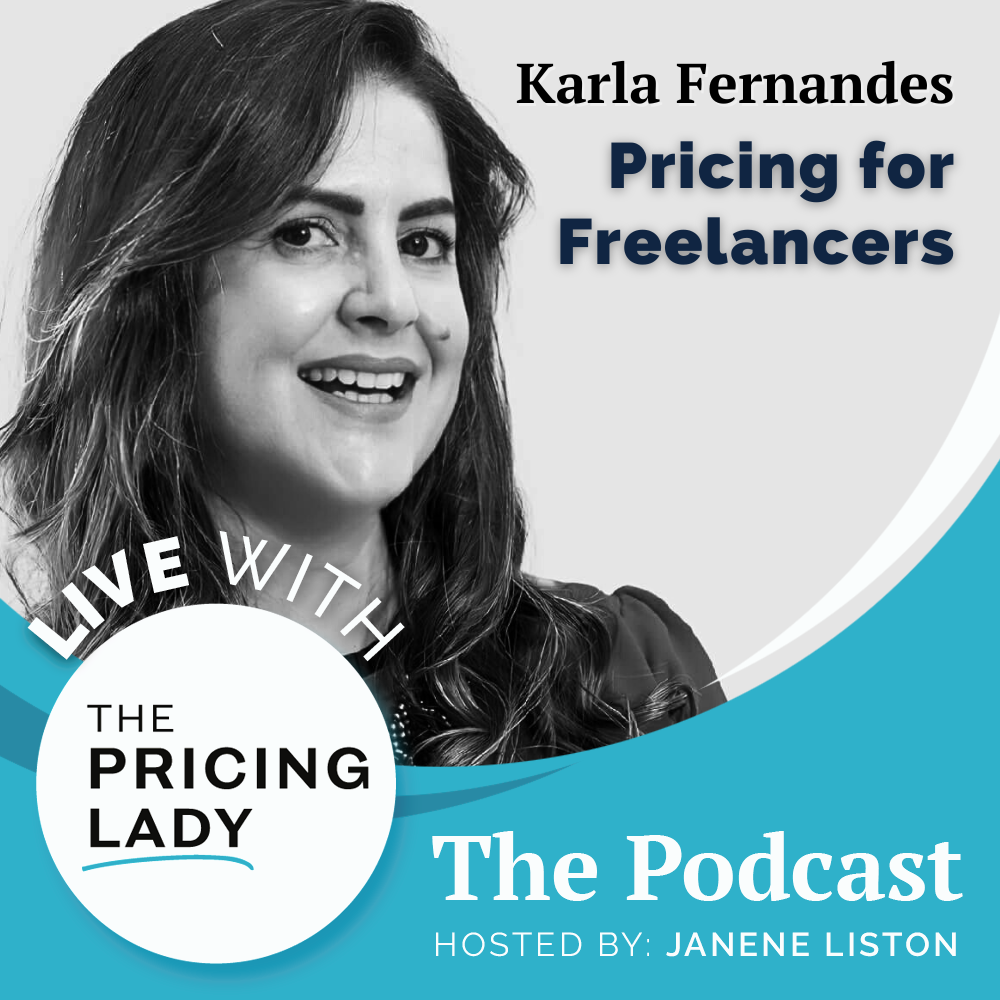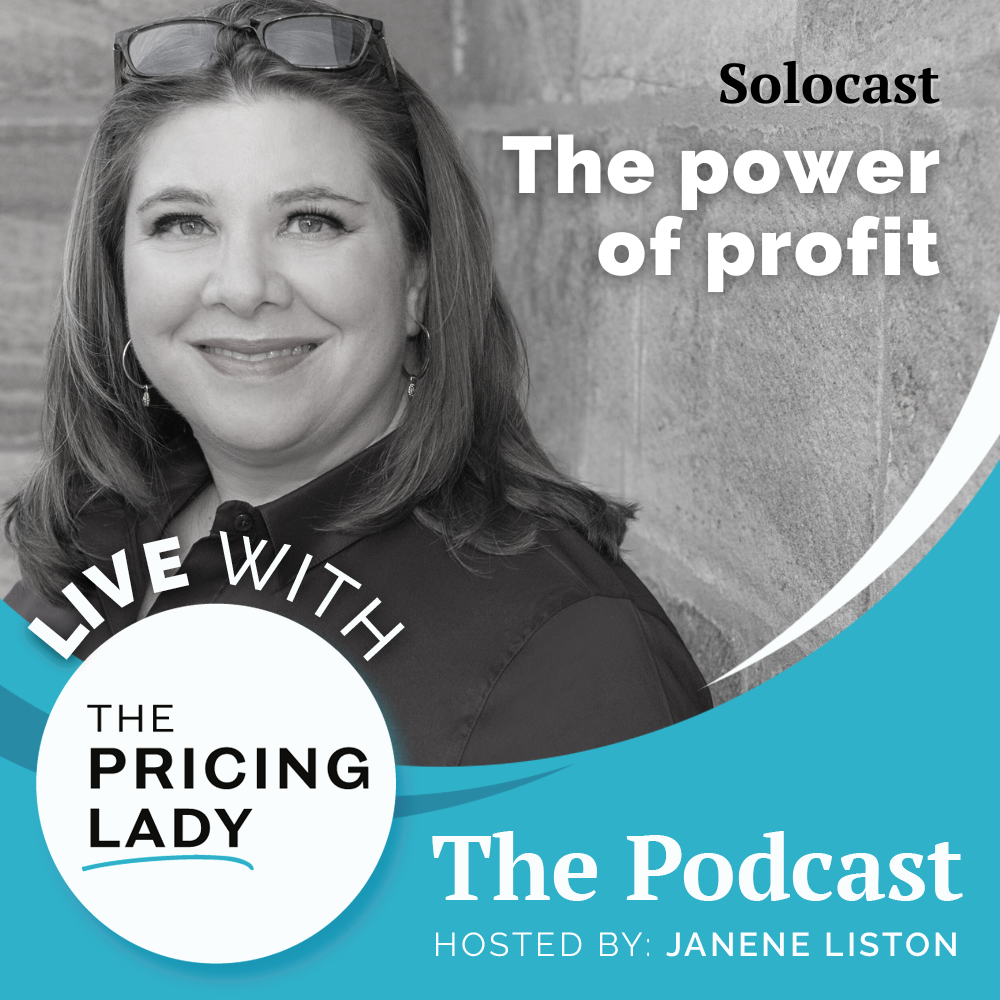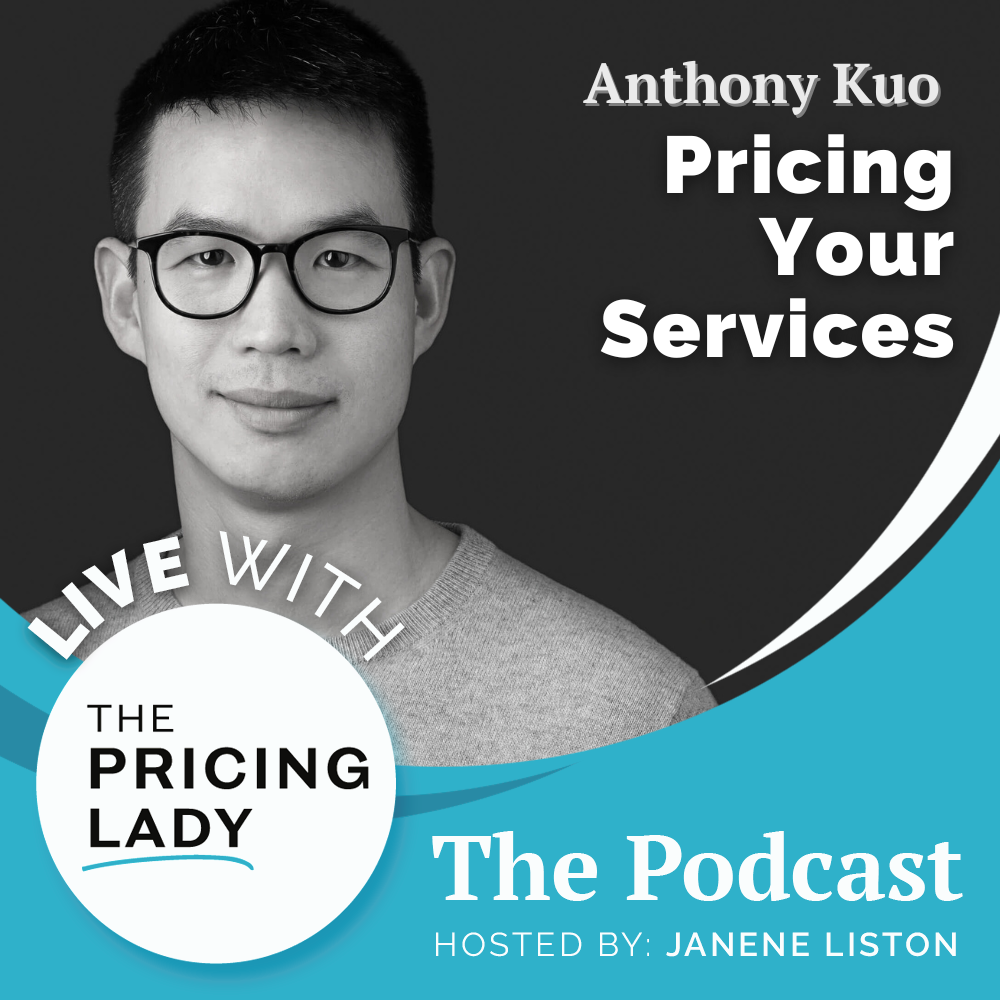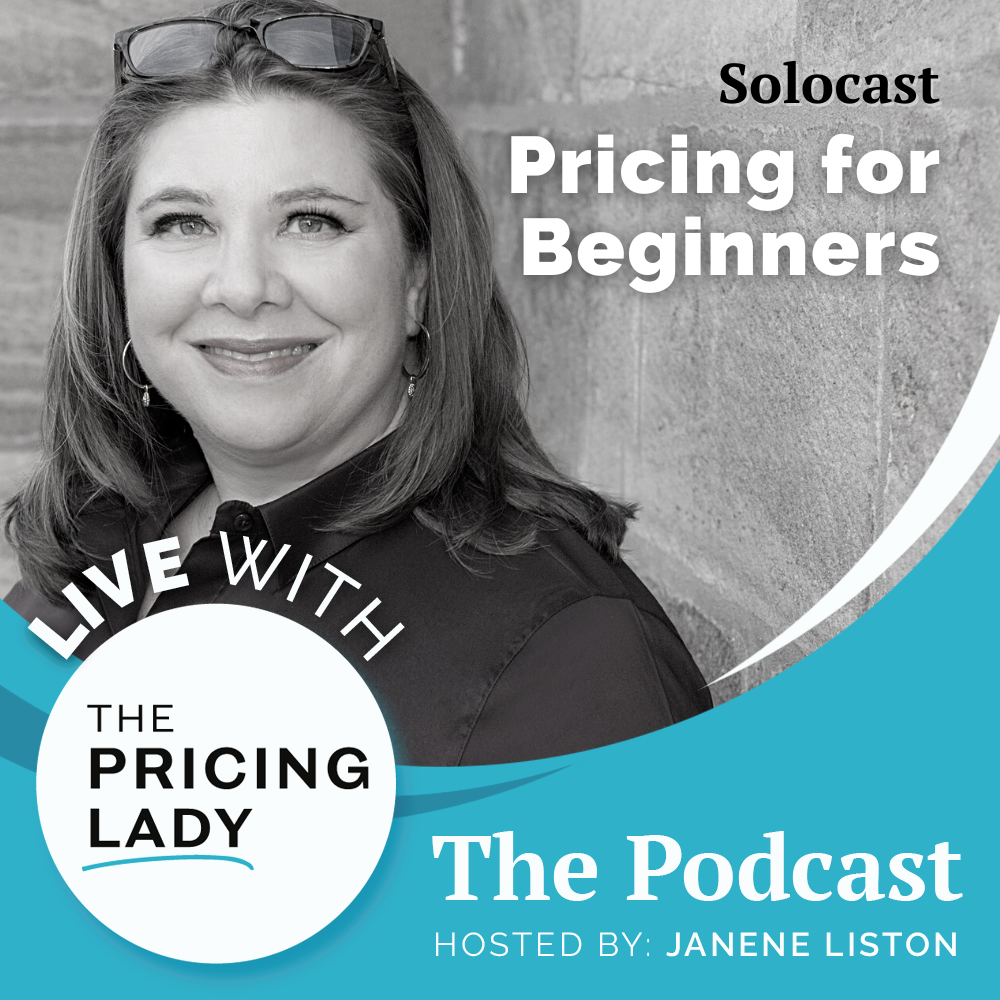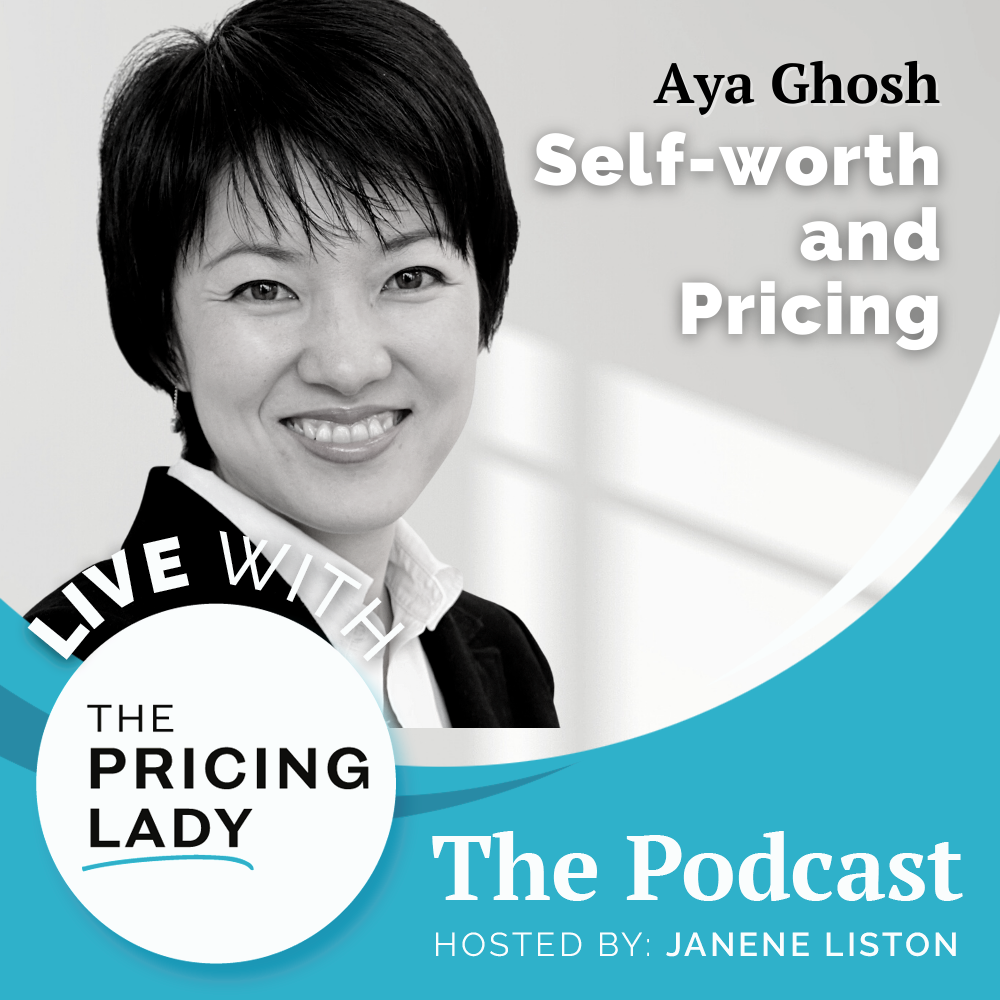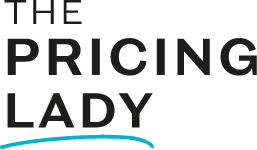Aligning the price to the value you deliver makes sense. More often than not businesses don’t really get there. They often find themselves selling a high value offer at a low value price. That’s precisely the predicament this week’s guest found herself in.
This happens because they don’t understand the value of what they’re offering and/or they don’t know how to go about setting their prices. Almost always that’s combined with a lack of confidence – related to money, success and/or worthiness. The result is they undervalue themselves and their offer…more importantly so do their clients. Meaning less sales at a lower price. Aligning the price to the value you bring your clients makes more then sense, it’s critical to being profitable and building your financial success.
In This Episode
That’s what I spoke about in this episode with Amanda Berlin, she’s a visibility and business consultant for entrepreneurs. Helping them grow their business and impact based on tactics used and honed over 12 years in the corporate PR world. Amanda and her clients have been featured in all types of media — from Business Insider to Entrepreneur on Fire and WNYW Fox 5 to Bustle.com.
We talked about how the first step is awareness, because only once you know the problem can you start to solve it. And you have to able to confidently talk about value. Only then are you ready to consider raising your prices. After about 3 years of toiling in her business Amanda realized she was selling a high touch, high ticket offer at a low ticket price. Ouch!
What did she do? You’ll have to listen to find out about that and much more.
If you prefer, you can watch the video of this episode on my YouTube channel. Note the highlight timing is different.
Episode Highlights
- 1:18 Getting to Know Amanda
- 3:50 What’s the value Amanda’s clients get
- 5:28 How she got started
- 6:31 Biggest pricing learning
- 11:41 Getting ready to charge more
- 13:36 Be enthusiastic about talking about the value
- 15:41 Biggest mistake in communicating
- 19:11 Wrap up questions
Favorite Quotes
“Part of any business owners journey is feeling really confident in your offers and the language you use to describe your offers.” Amanda
“Using the initial client call as a ‘dog and pony’ show, is a HUGE mistake. …it absolutely sabotages the sale.”
“I decided to change the price in part because I shifted my offer to be something that deliver a system. A process, framework and deliverables I could guide them through. And tweak based on their needs. I put it off until I had backed myself into a corner.” Amanda
“If you don’t trust yourself, you know where I’m going with this statement. If you don’t trust yourself or your process, then how can you expect someone else to?” Amanda
Amanda”The best business advice I got was from my dad, which was simply ‘Be happy’.” Amanda
“One of the biggest mistakes people make in communicating with client prospects is not being clear about what you want them to do. The call-to-action must be straightforward.” Amanda
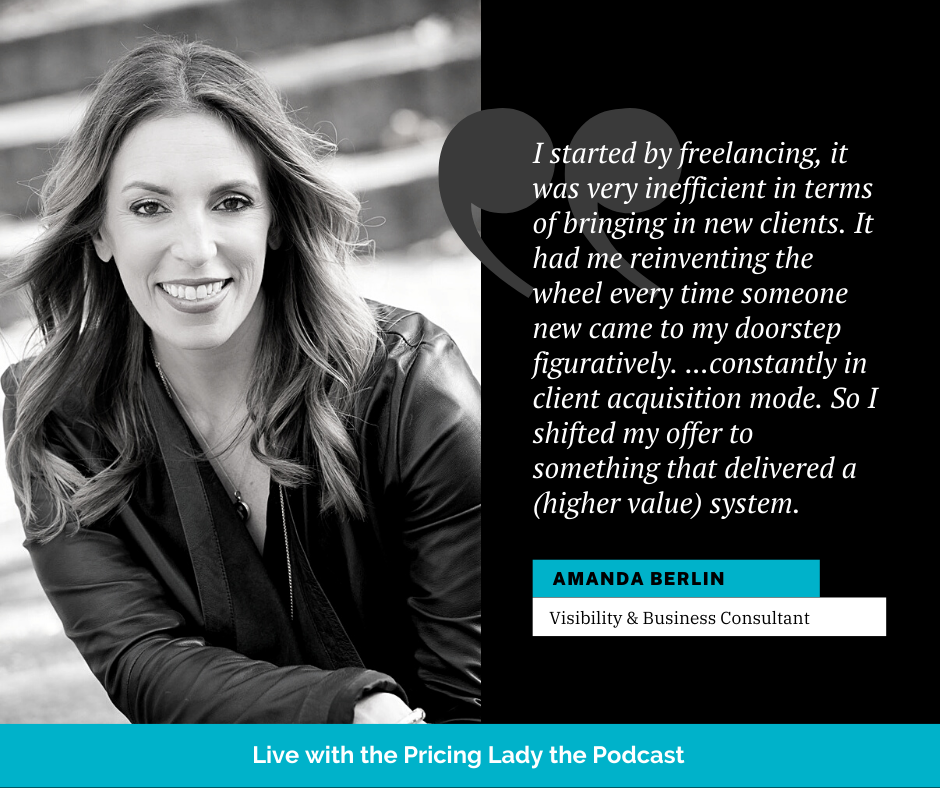
Episode Links
- Website: www.amandaberlin.com
- Inst: https://www.instagram.com/amandagailberlin/
- Linkedin: https://www.linkedin.com/in/berlinamanda/
- Book Recommendation: Radical Acceptance by Tara Brach
Connect with Janene
Website | Linkedin | YouTube | Facebook | Email List
Get started improving your business. Sometimes it’s difficult to know where to begin. I suggest you Download the the self assessment Pricing Scorecard. Get a view of what’s working and what’s not working when it comes to pricing in your business. Figure out where to start making improvements.
Get in touch with Janene. If you’ve got a question that needs answering, a challenge you’re facing or you have suggestions for future topics or guests, let me know. Contact Janene.
Listen up! Don’t miss out. There’s a lot going on and you’ll want to be in the know. Follow my YouTube channel (rate it too please) so you don’t miss an episode of Live with the Pricing Lady or join my Email List.
Transform your business and life. My business is about helping you build a better business. One that’s profitable and where you can confidently charge for the value you deliver. Curious about my coaching and consulting offers, check them out. Let’s see how we can work together. Book a complimentary Discovery Call today!
Episode Transcript
Janene: Why don’t we start with a couple of rapid fire questions. First of all, Amanda, where are you from?
Amanda: I am from New Jersey. Originally. I can tell you all the places that I, that I feel like I’m from, I also would say I’m a new Yorker. I actually lived in Manhattan for 15 years.
Janene: Wow. Amazing, cool place. And Amanda, what is your super power?
Amanda: I love this question. My super power is being a champion for other people. For anyone in my life, I can find the thing about you, my daughter, my clients that is uniquely amazing. And you’re like, oh wow. I didn’t realize that about myself. And maybe I should celebrate that.
Janene: I love that. Being a champion for others. That’s a great skill, a great superpower to have. Next, question, what’s one interesting thing that most people don’t actually know about you.
Amanda: Most people don’t know that I am an extraordinarily slow reader. It takes me forever to finish a book because my reading is sacred time. It’s the last thing I do before I fall asleep.I can read about a page or so at a time. I relish the moments where I get to read as a leisure activity during the day, but it doesn’t happen that often.
I spent all of high school, not reading anything that was assigned. ’cause I felt like it was such a rapid succession of material. I just couldn’t keep up. And it was not things that I chose or that I was interested in. Now I can choose. I love reading, I just read at a very slow pace.
Janene: A leisure pace. Let’s call it that.
What’s the Value Amanda Delivers her Clients?
Now in a moment we’re going to get into your pricing journey, but before we do that, I’d like to give people an understanding of what’s the value, because of course pricing is related to value. What’s the value that you really bring clients.
Amanda: I love that the value that I bring clients is an awareness that. An awareness and an understanding and a skill set that they can utilize to put their business out there in a way that has been proven over decades in the PR world. I help my clients be visible on behalf of their businesses without spending money on ads and without relying on a massive team.. Because I teach them how to do their own PR based on the tactics that we utilized in the corporate PR world adapted for solo entrepreneurs and small businesses.
Janene: Right. Okay. Excellent. And what does having that ability to do that visibility bring them in the end.
Amanda: Oh, it brings them more clients, more credibility, more visibility, more fame more expert status validity to their business.
Janene: Okay. Super excellent. Sounds fascinating. I know I enjoyed, I worked with Amanda years ago. I can attest to her skills in this area.
What Was Pricing Like at the Start?
Why don’t we start digging into your pricing journey when you first started your business? What was it like when you sat down and first priced something?
Amanda: Yeah. So I came from the PR agency world. And when I left my corporate job, really what I kind of fell into, which I think is probably not unusual was a freelance model where I was pricing my work on an hourly basis or on a monthly retainer, but where I was creating a project scope from scratch for each individual. And that’s where my journey began.
Janene: And how, how did that work for you? What, what did you find out or learn along the way with that?
Amanda: I learned that it was very inefficient. In terms of bringing in new clients, it had me kind of reinventing the wheel every time someone new came to my doorstep figuratively, and it really had me scrambling every, you know, just in the constant client acquisition, scramble.
I Was Selling a High Ticket, high-value Offer at a Low Ticket Price
Janene: One of the things that you you wrote about in the application form for this was your biggest pricing learning. One of the things you said was that you realized you were selling a premium service or a high touch service at a low touch price. Share with us how you came to that conclusion and what you did?
Amanda: Yeah. This was an organic journey for me. I shifted my model after the freelance season to a consulting service. Where I developed and I helped my clients do this as well. Part of their visibility journey is feeling confident in your offers and the language you use.
I shifted my offer to be something that delivered a system. I was now guiding clients through a process based on a framework and deliverables. The process could be tweaked based on each client’s individual needs, but not reinvented each time.
The service was a baseline. And I started that at, what I deemed at the time was quite a scary price point for me. Granted right now, it’s interesting to look back. It was five or so years ago. After three years of toiling in the freelance zone, made the shift to this model.
I’m pricing that a similar service with a lot more support from tools and from my team, at four times what I was pricing it in the very beginning. But it really began with creating an offer based on a system that I guided clients through.
Getting Stuck in Freelance Mode
Janene: I find that really interesting, first of all, because I think a lot of people get stuck in this freelance mode and trading time for money. And I find it interesting because as you were describing it, it actually hits two things. So one it’s costing you more because it’s taking you so much time to reinvent the wheel and make these customized offers for every little thing. And then on the other hand, you’re not charging enough for it.
It actually has an impact on your profitability from more than one side.
Amanda: Right. That’s a really good point. Yeah. Yeah, absolutely.
Janene: Yeah. And I think a lot of people don’t really can take that into consideration and you, I’m sure that you realize this now, but when you charge more than you can actually, you actually need fewer customers in order to get to the same goal that you have for your business. It really does have some, some positive side effects.
Amanda: Yeah. And I’ll also add to that, that from, my position as a champion for my clients, it serves your client better when they can trust you as having developed a system to solve their problem. If you’re constantly squirreling down notes and creating a custom package there’s this element of like, oh, like she’s creating something for me based off of what? Based off of, it’s obviously not nothing, but it’s not based off of your… when you develop a system, there’s an air of confidence that you get to put out there and communicate to a potential client that you have a path for that already written.
How’d You Prepare Yourself for Charging More
Amanda, when, when you had to charge more. How did you gear yourself up to do that?
Amanda: Yes. Well, I think you and I have talked about this pricing crisis that I had kind of in that middle space, in my business where I introduced a service, that was a shorter term service, but I was charging a premium price for it.
It was more than like my longer service. And it made no sense that I would be charging this much more for something that was short-term then this like longer term, month on month work with me. So I backed myself into a corner in terms of needing to raise my prices. I felt like it was this necessary thing that I had to do.
And I just, I remember distinctly one day on the fly, like literally I don’t think I even, I don’t think I really applied a ton of thought to it. I must’ve been the back of my mind, but on the fly on a consult call with a client, I named my new higher price for that longer term one-on-one service in that was it. That was the price.
Janene: So you just dove right into the deep end. And sometimes this is where people find them because they’ve ignored the topic for so long that they get into a position where they either have to change things dramatically or exit the business. And that may not have been that extreme of a case in, in your example.
But this is a quite often where people find themselves.
Amanda: Interesting. Yeah.
What’s the Most Important Thing You’ve Learned in Your Years of Business?
Janene: Excellent. What do you think is the most important thing that you’ve learned in, I don’t know how many years you’ve been in business? Specifically when it comes to either the value you offer or how you work with your prices?
Amanda: I’ve been out of corporates in January 13th, 2012. I toiled in freelance, cobbling it together phase for probably about three years. And then I was or maybe even four years before I was really adamant. I knew this business can be so much more and I need to make a drastic change. To get some support.
I hired my first coach, even though it was terrifying. I think that what I’ve learned over the years in terms of the value and value that I bring and the value that we can articulate out there into the world. That’s really the learning is that it’s so important to feel confident with your communication. Not just comfortable, but feel excited, enthusiastic about talking about how you serve. Because this is what engages a prospective client… the pathway to becoming enthusiastic about talking about how you serve is by embracing your expertise, creating a path for a client to engage in in order to utilize your service, which really does validate you as an expert. Being your own best spokesperson and engendering trust when you talk about who you are and what you do.
Janene: Wow. That’s amazing. Yeah. It is. It is a leap of faith in yourself in some ways, isn’t it?
Amanda: Absolutely. Absolutely. And if you don’t trust yourself, you know where I’m going with this statement. If you don’t, if you’re not trust yourself, you don’t trust your process, then how can you expect someone else?
Biggest Mistakes People Make When It Comes to Expressing Value
What do you think the biggest, the biggest mistakes are that people make when it comes to expressing the value?
Amanda: A lot of the mistakes come in the run up to and in the sales conversation. For many of the women who I work with and some men, being muddy about the call to action is another. In terms of what you want someone to do when they hear about you. That’s our ultimate work. It’s getting you ready for your closeup, for your visibility, and then getting you out there and having you be visible on behalf of your business.
But you’re not going to be ready to be visible if the foundation (run up to and during the sales conversation) is still shaky.
Janene: That’s a really important point. The initial consultation is misused. Instead of it being an opportunity to help the client get clarity and vet them from your side, a lot of people use it to do a little dog and pony show about how valuable they can be. I’m curious about your experience with that.
Amanda: It’s a huge mistake, the dog and pony show. Because it creates a false sense of empowerment on behalf of the client. They think that they can go out and do the thing because you’ve given them that tidbit of information. It absolutely sabotages the sale.
It’s some kind of voodoo magic, like black magic. The minute you give advice on a consult call is the minute that the sale is gone. They think that they can go and do it themselves. Avoid giving advice on your sales calls.
Janene: There you have it straight from Amanda’s mouth to our ears. Avoid the urge to give advice during this call. Excellent. Amanda, it’s time to wrap up.
Wrapping Things Up
What’s one thing that you think people should take away from our pricing discussion today.
Amanda: Knowing your value and don’t shy away from the challenges that are confronting you when it comes to your pricing.
Janene: What’s the best of business advice that you’ve been given over the years?
Amanda: That is a great question. The best business advice I ever got was from my dad, which was simply be happy.My dad is not like a happy-go-lucky kind of, I guess I wouldn’t really describe him that way. I’d describe him as really straightforward and cynical and dry. But yet he always made me feel resourceful and empowered and like I could trust myself.
And so I would say that that was a real that was a great parenting move.
Janene: I love that resourceful, empowered and trusting in. That’s the trifecta business advice. Excellent. What’s a favorite book or tool that you’d like to share with the audience today?
Amanda: One of my favorites. I think that that any entrepreneurial endeavor is a true exercise in personal development. One book that I will recommend here was called Radical Acceptance by Tara Brach. She is a Western psychologist with a with a heavy influence from the Buddhist culture. And there’s so many little nuggets in that book.
She integrates pop culture and humor in her teachings. She teaches that a lot of the pain that we experience is optional . There is pain that we inflict upon ourselves through the judgment of our experience of the initial pain. And she calls that this, I think it’s a Buddhist concept, the second arrow. The first arrow is the initial hurt that may be inevitable for the second arrow is something we inflict upon ourselves suffering our reactions to that first pain.

